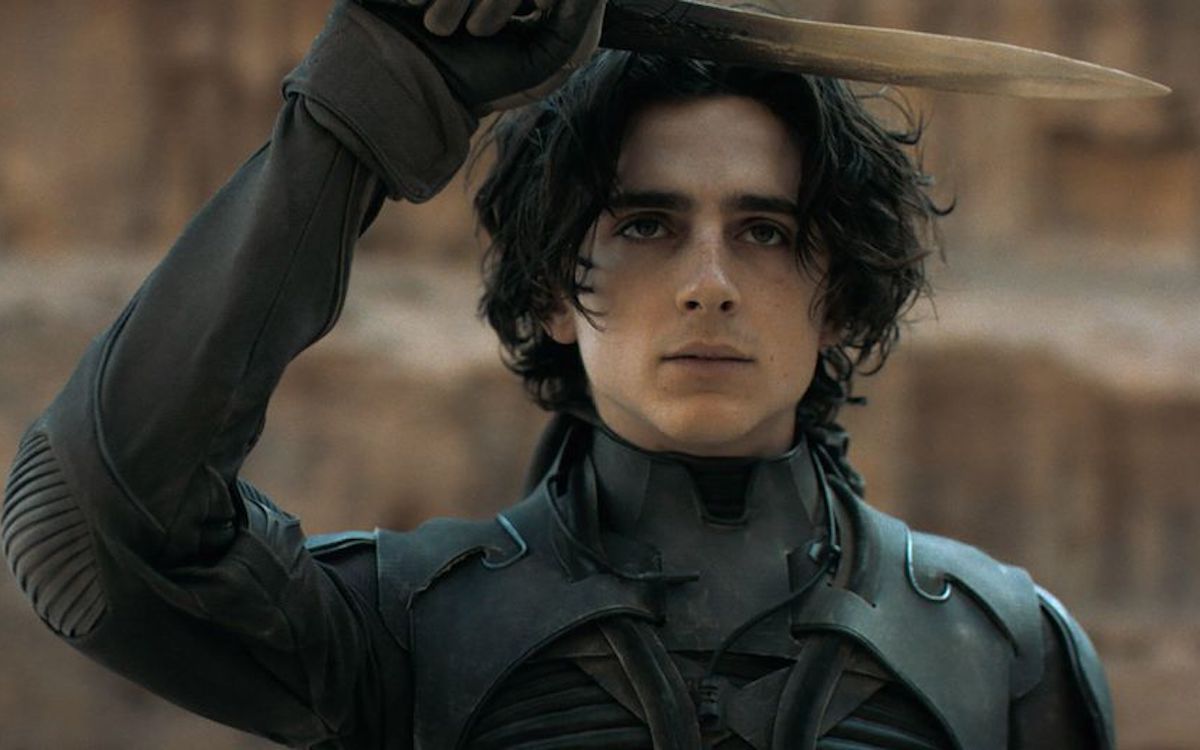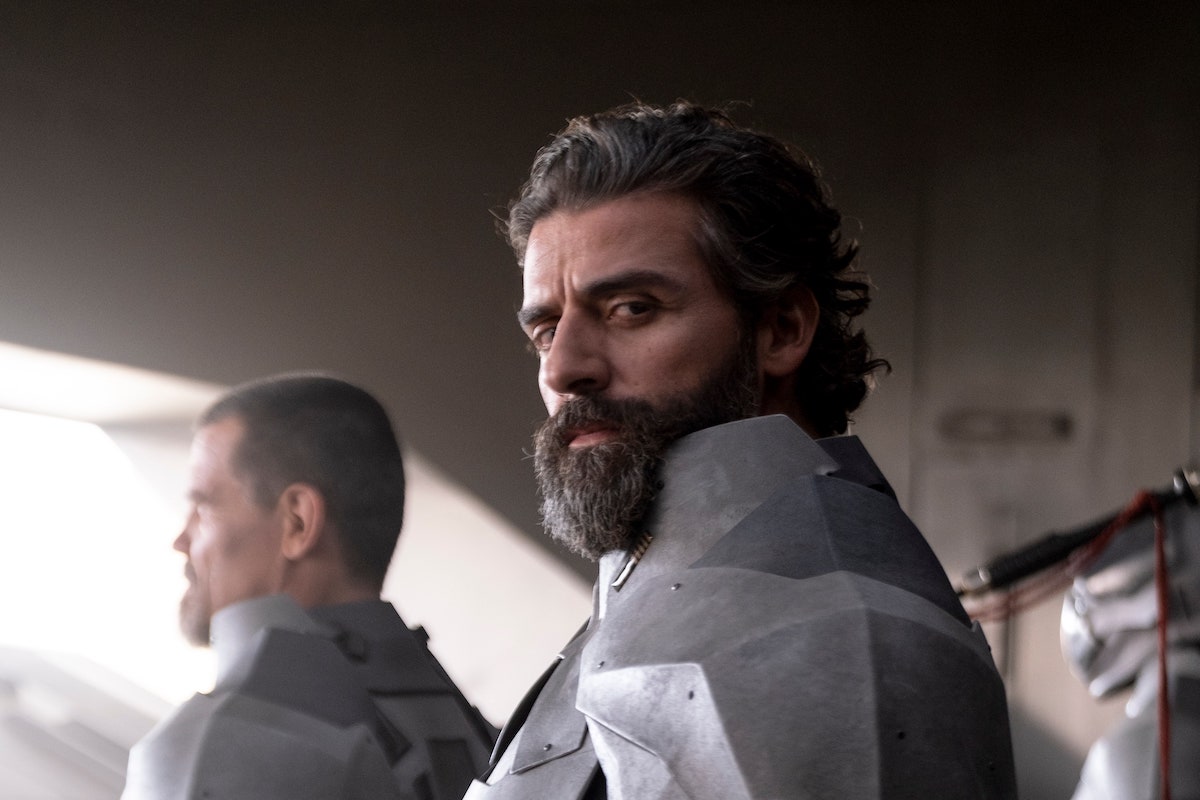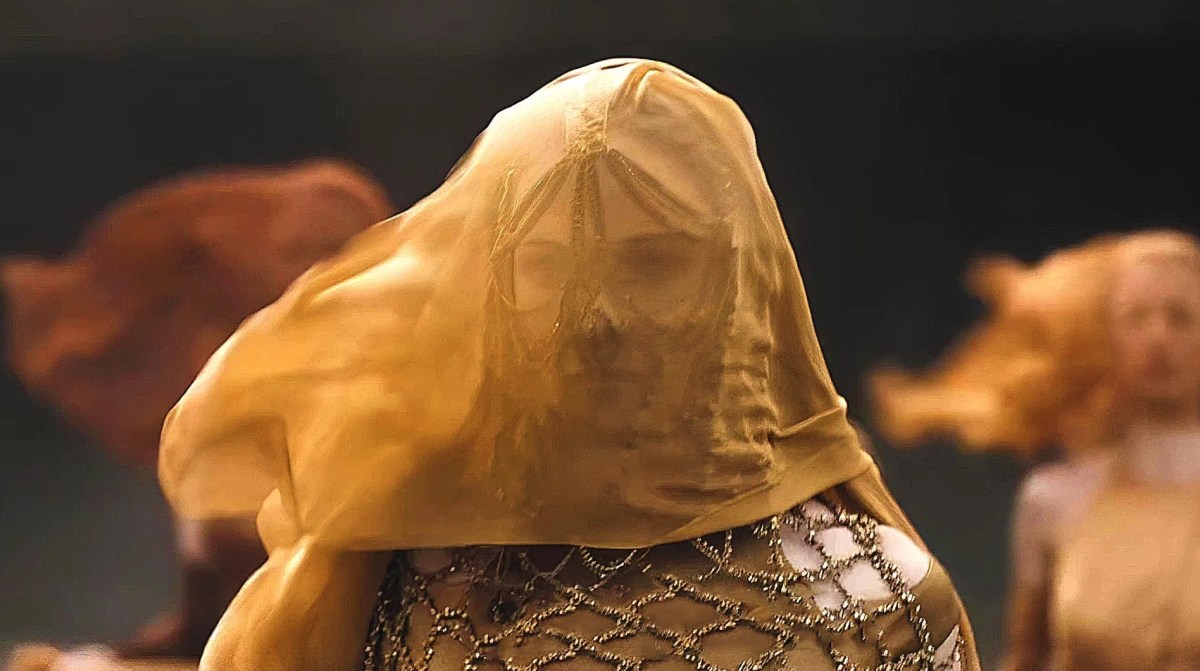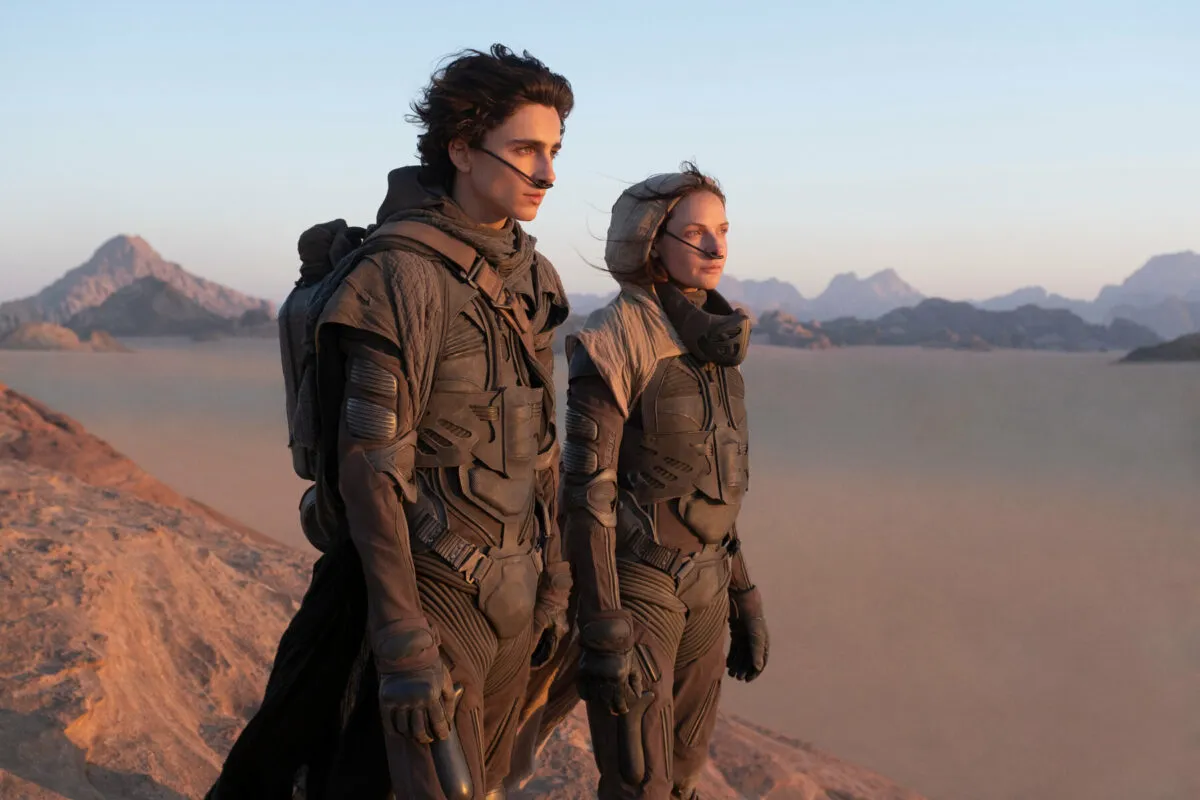***Spoilers for the events after what was covered in Dune: Part One ahead. Be warned.***
The universe Frank Herbert created for his Dune series is sprawling and complex, as one might expect from one of the most majestic space operas to have ever landed on pop culture—and Denis Villeneuve’s 2021 movie barely scratched its surface. That’s not to disparage it, the film is visually stunning and perfectly cast, but what we saw in Dune: Part One is barely the beginning of Paul’s story. So, if you felt like it left you wanting so much more, you’re not alone.
And with the movies, we’ve got some time before we see the next chapter. Its sequel, Dune: Part Two, is still in the casting process. The news coming out about the follow-up is delightful, and we will undoubtedly expand on Emperors, Great Houses, Bene Gesserit, and mélange mining—explaining more of the past of this world, and also, its future. But you don’t have to wait for the movie to learn more about this spectacular universe.
If you’re looking for the next reading project to embark on, then look no further than the Dune books. How many are there? A lot. How many years do they span in-universe? So many. Does it look like a daunting task at first? Definitely. But it’s also a joy, and worth it. Here’s a guide that will help you navigate through the more than twenty titles Herbert first, and then his son Brian, with the help of author Kevin J. Anderson, have added to this series.
The original series
The starting point of everything is, as you might guess, Dune, published in 1965. In Dune, we see the beginning of Paul’s legend, from leaving his home planet of Caladan, the son of a Duke, to gaining power on Arrakis as the Muad’dib, the promised messiah the Fremen were waiting for.
After Dune, comes Dune Messiah, published in 1969—in which a plot is underway for eliminating Paul, who by now has amassed an incredible amount of power and is the central figure of a fanatic religion sweeping across the universe. However, Paul’s life will take a completely different turn, one chosen by him, and he will leave his seat on Dune to his twin children.
In Children of Dune, published in 1976, Leto II and Ghanima Atreides are left to rule Arrakis, by now a green planet brimming with life. Leto II, in particular, will take all the steps he deems necessary to ensure his rule and the future of their world.

This is where many readers stop because the story is somewhat complete—and it was meant to be complete. Frank Herbert had no intentions of continuing the series, but did so, under the insistence of fans. So, the other three books in the original series, God Emperor of Dune (1981), Heretics of Dune (1984), and Chapterhouse: Dune (1985), are set a thousand years into the future from the first three, and follow as Leto II Atreides tries to prevent the extinction of humanity and the death of his beloved Arrakis.
What happened post-Herbert’s death?
Frank Herbert passed away a year after the publication of Chapterhouse: Dune, but left behind a series of notes that helped his son, Brian, and his writing partner, Kevin J. Anderson, continue to add to the Dune universe. These other books can be divided into prequels and sequels—even though the former category definitely includes more titles. Fourteen, to be exact, divided into one doulogy and four trilogies. Let’s start with the first trilogy—Prelude to Dune—which consists of the three books: House Atreides, House Harkonnen, and House Corrino. Set in the decades immediately before the start of Dune, they focus mainly on the supporting cast around Paul Atreides, and especially on his parents, Leto I and Jessica, as well as their sworn rival, Vladimir Harkonnen.

Then, there is the Legends of Dune trilogy, which goes even further back in time to look at the events that made the universe of Dune what it is—a place with human computers and no machines, an element that definitely makes it stand out from most sci-fi (where technology plays a vital role). The Butlerian Jihad, The Machine Crusade, and The Battle of Corrin are set more than 10,000 years before the move of House Atreides from Caladan to Arrakis—they tell the story of humanity defeating the Thinking Machines and gaining back its freedom.
The Great Schools of Dune trilogy is set in the immediate aftermath of the Butlerian Jihad, where many of the organizations we see in Dune are established. The trilogy focuses on important aspects of Paul’s future story, with Sisterhood of Dune dedicated to the Bene Dessert, Mentats of Dune to the human computers trained to replace the (now defeated) Thinking Machines, and Navigators of Dune explaining the origins of the Spacing Guild.
The only duology in this list is Heroes of Dune, and it’s also the one with the most confusing timeline—Paul of Dune is set between Dune and Dune Messiah, collecting episodes from Paul’s youth in the Arrakis desert. The Winds of Dune is instead focused on Paul’s mother, Lady Jessica, and is set mainly between Dune Messiah and Children of Dune.

Finally, there’s the Caladan trilogy, the most recent of all the works Brian Herbert and Kevin J. Anderson added to the Dune universe. This trilogy focuses on Paul, Leto I, and Jessica during their life on Caladan, immediately before their move to Arrakis and the precipitation of events that would follow. The Duke of Caladan and The Lady of Caladan, focused on Leto I and Jessica, have already been published, while the final installment of the trilogy, The Heir of Caladan, is set to come out in October of 2022.
What comes after Dune
Only two books were added as a sequel to the original series, and both were completed by Brian Herbert and Kevin J. Anderson while relying heavily on Frank Herbert’s notes and storyboards. Hunters of Dune and Sandworms of Dune, published respectively in 2006 and 2007, cover humanity’s final confrontation with what is revealed to be the final and most terrible enemy of them all.
So, to sum it all up, here are two possible orders you can follow:
Publishing Order
- Dune (1965)
- Dune Messiah (1969)
- Children of Dune (1976)
- God Emperor of Dune (1981)
- Heretics of Dune (1984)
- Chapterhouse: Dune (1985)
- House Atreides (1999)
- House Harkonnen (2000)
- House Corrino (2001)
- The Butlerian Jihad (2002)
- The Machine Crusade (2003)
- The Battle of Corrin (2004)
- Hunters of Dune (2006)
- Sandwords of Dune (2007)
- Paul of Dune (2008)
- The Winds of Dune (2009)
- Sisterhood of Dune (2011)
- Mentats of Dune (2014)
- Navigators of Dune (2016)
- The Duke of Caladan (2020)
- The Lady of Caladan (2021)
- The Heir of Caladan (2022)
In-Universe Order
- The Butlerian Jihad
- The Machine Crusade
- The Battle of Corrin
- Sisterhood of Dune
- Mentats of Dune
- Navigators of Dune
- House Atreides
- House Harkonnen
- House Corrino
- The Duke of Caladan
- The Lady of Caladan
- The Heir of Caladan
- Dune
- Paul of Dune
- Dune Messiah
- The Winds of Dune
- Children of Dune
- God Emperor of Dune
- Heretics of Dune
- Chapterhouse: Dune
- Hunters of Dune
- Sandworms of Dune
(via: How To Read Me; image: Warner Bros)









Published: Mar 16, 2022 02:16 pm